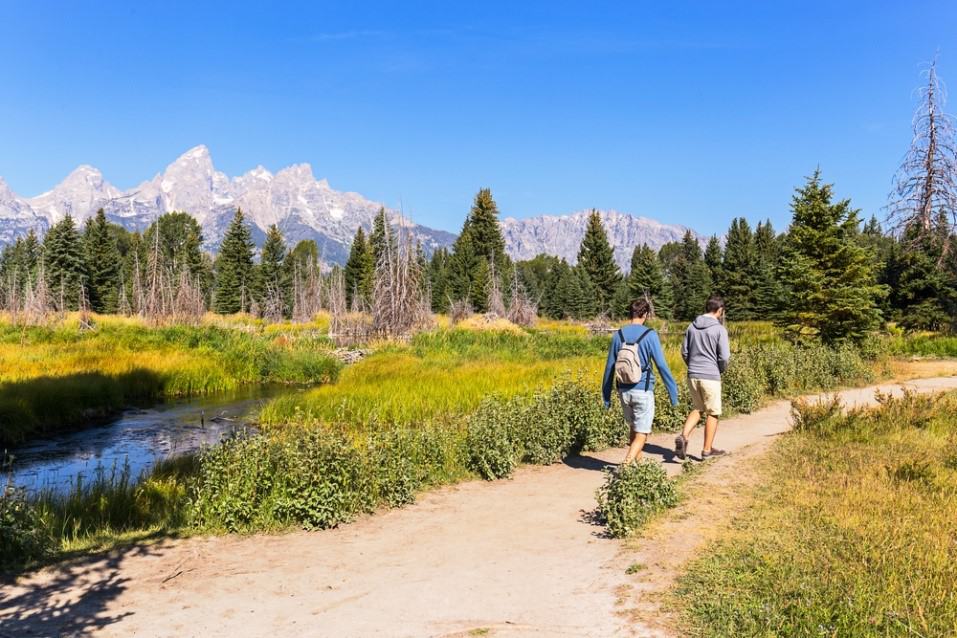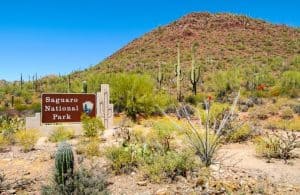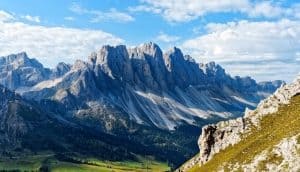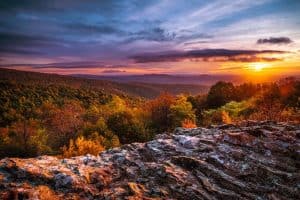Last Updated on October 10, 2024 by Aswetravel
Grand Teton Hikes – Grand Teton National Park is the ideal spot to visit if you’re a hiking enthusiast. This park is a hiker’s paradise—you can hike around the glacier-fed lake, through the scenic canyons, and go up to the highest peaks.
That’s not all—you can also see wildlife from the hiking trails, with moose, bear, and elk making frequent appearances. For an adventurous excursion at the Grand Teton, fasten your hiking shoes and choose an activity from the following list.
This guide lists several trails—from the easiest to the more challenging ones. These are all a single day’s hike.
What Are the Best Grand Teton Hikes?
1. Cascade Canyon Trail
Cascade Canyon is accessible from the Jenny Lake Trailhead by using the Jenny Lake Ferry—ferrying hikers across the water every fifteen minutes. The ferry option saves energy and time and is required to hike up and into the picturesque Cascade Canyon.
A trek through Cascade Canyon is rewarded with the glistening shores of Lake Solitude, 7 miles from the ferry’s dropping-off point. Trekking through Cascade Canyon uncovers the steep mountain views every step of the way.
On arrival at North Fork of Cascade Canyon, you are encouraged to check behind them to behold the iconic Grand Teton terrain silhouette by canyon walls. Ensure you carry snacks and water for the uphill hike that climbs over 2,300 feet.
After trekking the seven miles to get to Lake Solitude, guests may be amazed to find a crowded state around the water. There’s enough room to accommodate everyone at this well-known Teton attraction site.
Note: Begin the hike early in the day to experience the shoreline and relish the postcard mountain settings to the fullest. A quick dive into Lake Solitude provides a cold rush of exhilaration.
2. Grand Teton Hiking Taggart Lake
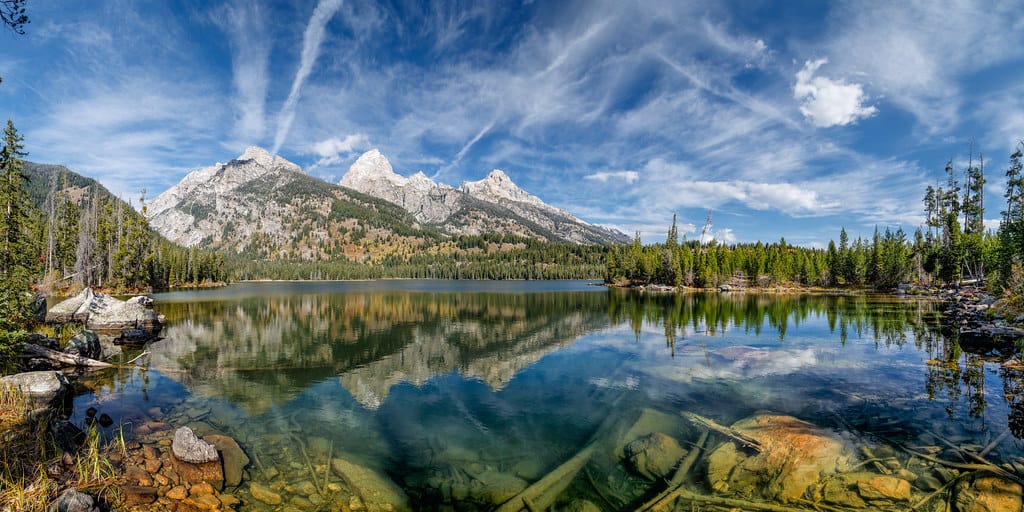
Taggart Lake offers a shorter hike (three-mile round-trip) with gorgeous views of Grand Teton. The lake provides exposure to the mega-monoliths throughout the entire route.
Taggart Lake Trailhead is the starting point, and it’s near the Southern Moose Park entrance. The trail steadily climbs via a forested surrounding and finally reaches the tranquil waters of Taggart Lake. Along the way, the trail gains minimal altitude and is a great wide track.
If you want more adventure, the trail progresses for an extra mile to Bradley Lake Shores. The best way to lose some of the crowds is to move further toward Bradley Lake.
Taggart Lake climbs a moderate level of altitude however far you go—this makes it an easily accessible hike that most families can enjoy.
3. Death Canyon Trail
Death Canyon is a welcoming region of Grand Teton National Park, all negative connotations aside. It features wildflowers that line the trail seasonally, with several wildlife sightings and intimate views of the environment.
White Grass Ranger Station is the trail’s starting point and comes into the overlook of Phelps Lake about a mile up the track. The altitude progresses here, and you have destinations to pick from when touring Death Canyon.
Four miles up the trail is Static Peak Junction, a great turnaround point. If you have strong legs and an early start, the junction leads to the Death Canyon Shelf or Static Peak Divide.
4. Two Ocean Lake Loop
Two Ocean Lake Loop offers a scenic and flat trail to follow. It is situated in the park’s northern region and can be accessed through Pacific Creek Road.
There are regular wildlife sightings along the entire trail. Swans, osprey, and herons have their homes in the Two Ocean Lake habitat.
There are also frequent appearances made by grizzly bears, moose, and elk. After six miles, the trail makes a whole loop around Two Ocean Lake with minimal altitude gain.
If you’re looking for more, Matilda Lake is nearby and links with Two Ocean Lake Loop. These extra trails offer a day-long escape without the altitude gains found all over the rest of the park.
5. Granite Canyon
The southernmost canyon to trek in Grand Teton National Park is Granite Canyon. It gains altitude to expose hikers to the beautiful Teton backcountry environs.
The canyon follows along the mountain streams and tributaries that flow into Snake River, which is nearby. It climbs gradually via a landscape with dense forest, massive boulders, and extended mountain views.
Daytime hikes in Granite Canyon entail an out-and-back escapade, and with an early beginning, Marion Lake, situated nine miles from the start of the trail, is a stunning sight to behold.
To climb up to Marion Lake, you have to trek over 3,0000 feet of altitude.
Around Marion Lake, you will find the Jackson Hole Mountain Resort. The resort offers an aerial tram ride to the Rendezvous Mountaintop. This eliminates sizable elevation and decent mileage from the equation.
6. Teton Crest Loop
Teton Crest Loop is Grand Teton National Park’s crown jewel. It connects the high-altitude passes, alpine lakes, and breathtaking massive mountain views highlighting the Teton Range.
The Teton Crest Trail hike entails a deep sense of awe and wonder, be it the slowing sun setting down across the mountain scenery or the shimmer you can see coming from Lake Solitude.
Since the trail holds a high status in the hiking community, it’s no shock that from mid-July to mid-September (a short hiking season), the backcountry’s pass to access this thrilling hike is limited.
Hikers can request early reservations for Teton Crest Loop beginning on the first Wednesday in January. Competitive walk-up permits are at hand for everyone yearning to make this unforgettable hike. The permits are accessible throughout the week on a first-come, first-served basis.
The permits control how the 11 camping zones are allocated to hiking parties throughout their schedule on the trail.
The Lower and Upper Paintbrush Canyons and Death Canyon Shelf stand out among all the camping zones. Although all the zones are spectacular, these three sites are particularly gorgeous.
The Teton Crest Trail differs in length according to the campsite allocated in your permit. However, each itinerary has over 30 miles of Teton Range alpine environs and some of the best top-rated backcountry hiking nationally.
7. Inspiration Point and Jenny Lake Loop
Jenny Lake Loop is a 7.6-mile moderate trek that can be completed in the afternoon or a long morning. This track is among some of the top-rated hiking trails in Jackson Hole and offers fresh perspectives of the Tetons the whole way.
Furthermore, the trail borders a massive water body and expands into the thick woodland surroundings to uncover outstretching views.
You can take a quick side trip to Inspiration Point when you are halfway through the lake at the Jenny Lake ferry docks.
This suitably named trek ascends for a mile from the West Shore boat dock to provide even more striking views. Jenny Lake Campground is situated near Inspirational Trail and provides visitors with a pleasant place to enjoy their overnight trip.
8. Paintbrush Divide and Canyon
Paintbrush Canyon offers an entire stunning color palette to behold and is nothing short of a utopian mountain backdrop starting from the String Lake Trailhead.
After touring String Lake for about two miles, you’ll come across the lower and upper sections of Paintbrush Canyon.
On its face, some areas appear to have manicured green grass sprouts between the huge brown rocks that highlight the landscape within the 7 miles that stretch Paintbrush Canyon.
The soaring tips of Teton Range also rise brilliantly against the open sky in Paintbrush Canyon.
Paintbrush Canyon Trail is just as steep as other hiking trails in Grand Teton. Elevation is gained every step of the trail, and the trek is guaranteed to put your legs to the test.
Holly Lake Trail is located within upper Paintbrush Canyon and definitely warrants a side trip. You should also check out Paintbrush Divide, situated at the end of Paintbrush Canyon. The Divide offers an alpine experience that bursts with color.
9. Hermitage Point Trail
Hermitage Point Trail is near Colter Bay Village and the visitor center. The trail winds through its surroundings, eventually leading to the edge of Jackson Lake.
There are plenty of opportunities for views and side trails along this 10-mile track, including Heron Pond and Swan Lake. On top of the avian wildlife on display, there have also been reports of beavers, bears, and moose sightings.
The track gains a slight elevation all around. The view of Mount Teton and the rest of Teton Range sticks out past the vast waters of Jackson Lake on clear days.
You are assured iconic Teton views the entire way, whether you opt to go to Heritage Point Peninsula or you get distracted by other interesting points along Hermitage Point.
10. Signal Mountain
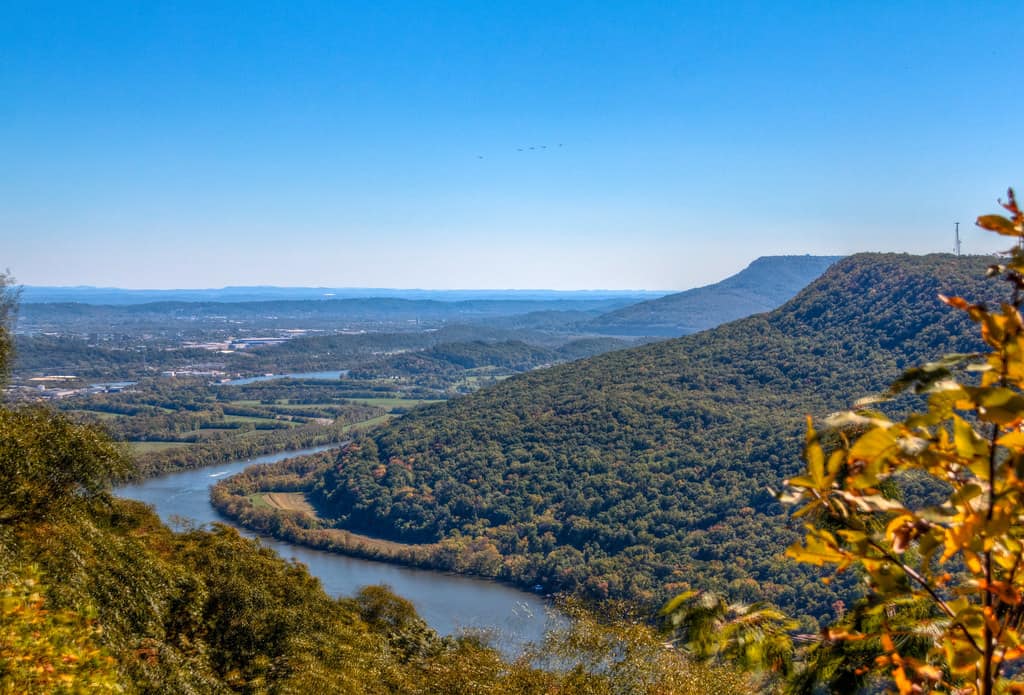
A long list of topographical factors adds to Teton’s skyward appearance. The Teton Range is situated along the Teton fault.
The foothills do not surround it because it is a relatively young mountain range, and erosion has yet to take significant elevation. The outcome is spectacular scenery, where the Tetons emerge like sharp daggers that pierce the sky above.
Many views of the stark mountain formations can be observed throughout the park. However, if you wish to get a better perspective of the scale of these tips, the Signal Mountain trail lends some valuable viewpoints.
The Signal Mountain trail starts near Signal Mountain Lodge on the northeastern side of the park, and it consists of an 850-feet altitude gain and is 6.8 miles long.
As you ascend the moderate grade of the Signal Mountain Trail, you are immediately exposed to views of Snake River, the entire Teton Range, and Lake Jackson.
At the top of the trail lies the most spectacular views of the Teton Range. At the Jackson Point Overlook, which is aptly named, hikers have the opportunity to view the entire Teton Range.
11. Alaska Basin
The Alaska Basin can be accessed through the west side of Grand Teton National Park through Driggs. The Basin has some of the grandest of all alpine scenery offered by the Teton Range.
This striking mountain terrain is not easily accessible and requires an expert and a lot of energy to venture into the Alaska Basin.
The Alaska Basin trek is muddy in some areas, rocky in other regions, and has an infamous area known as the Devil’s Stairs. This alpine-infused track is eight miles from the Teton Canyon campground.
The entire trail is lined with potential hazards, and hikers gain an altitude of 2,600 feet. Some of the possible hazards include bears, fast-moving and inclement weather, other wildlife, etc.
That said, the best months to take the hike are August and late July, when the course is likely to be snow-free.
12. Phelps Lake Trail
The Death Canyon Trail is situated southwest of the Grand Teton National Park entrance, and its most prominent feature is Lake Phelps. The Phelps Lake Trail ascends to an overlook of the water starting from White Grass Ranger Station before it plunges to the glacial-fed lake.
The track is situated along the lake’s edge. The Phelps Lake trail is steep, classifying it as strenuous; therefore, the track does not attract massive crowds compared to other trails.
The entire trail comes to about four miles to go completely around and back to the trailhead. The Phelps Trail can easily turn into a full-day excursion as it has alternative routes that lead to the Laurence S. Rockefeller Preserve.
You can begin your trek from the Laurence S. Rockefeller Preserve but arrive early as the parking lot here fills quickly during the popular summer months.
13. Amphitheater and Delta Lakes
One of the most popular hikes in the Grand Teton National Park is around Surprise, Delta, and Amphitheater Lakes. Although the hike is strenuous, you are guaranteed to visit three striking Alpine Lakes.
Getting to the lakes is a tiresome uphill trek. However, you will be rewarded with a splendid view of Taggart and Bradley Lakes along the way.
Amphitheater and Surprise Lakes are within close proximity. It is about a five-mile trek to get there. The entire walk is uphill, but the views are worth the hassle.
As you descend, you encounter magnificent Delta Lake. Initially, the lake was considered a hidden gem, but the secret is out now. This trail is among the most popular hiking destinations.
You will have to go through rock fields, steep dirt trails, and unmaintained trails as you hike to the lake. Expect a strenuous hike and big crowds to get to Delta Lake.
Experience Grand Teton Hikes
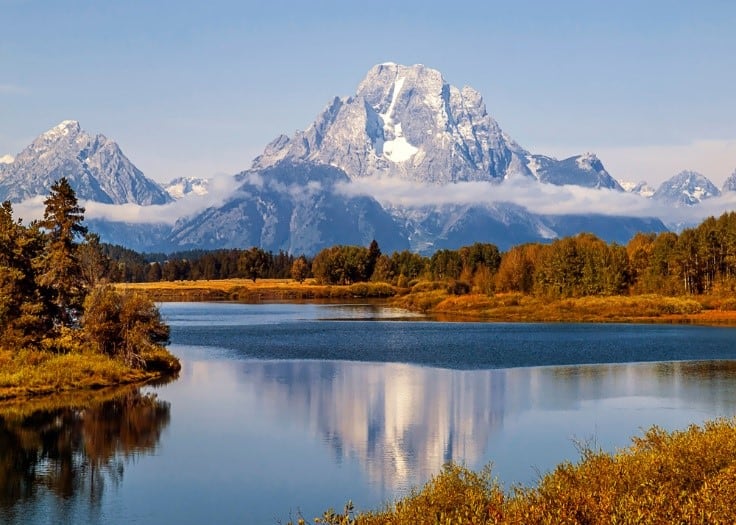
Grand Teton National Park is a habitat for several wild animals and impressive terrain, including the striking rugged mountain ranges that give the park its name.
The park is near Yellowstone National Park, meaning it is often overlooked. However, Grand Teton National Park is a mystical gem filled with magnificent creatures, topographical mysteries, and history.
Glacier National Park Camping
Best Time to Visit Glacier National Park
Best Time to Visit the Grand Canyon National Park
Things to Do in Rocky Mountain National Park
Yellowstone Hiking Trails
Best Time to Visit Yellowstone
Yosemite Hiking Trails
Best Time to Visit Yosemite
Best Time to Visit Grand Teton National Park
Best Death Valley Hikes and Tips for Hiking Death Valley
Things to Do at Mammoth Cave
Best Time to Visit Sequoia National Park
Grand Teton Hikes
Best Hikes in Bryce Canyon
Best Time to Visit Death Valley
Best Time to Visit Acadia National Park
Best Hikes In Shenandoah National Park
Badlands National Park Camping
Things to Do in Badlands National Park
